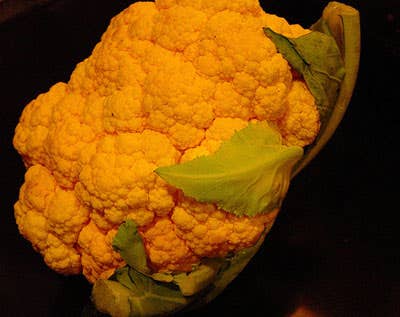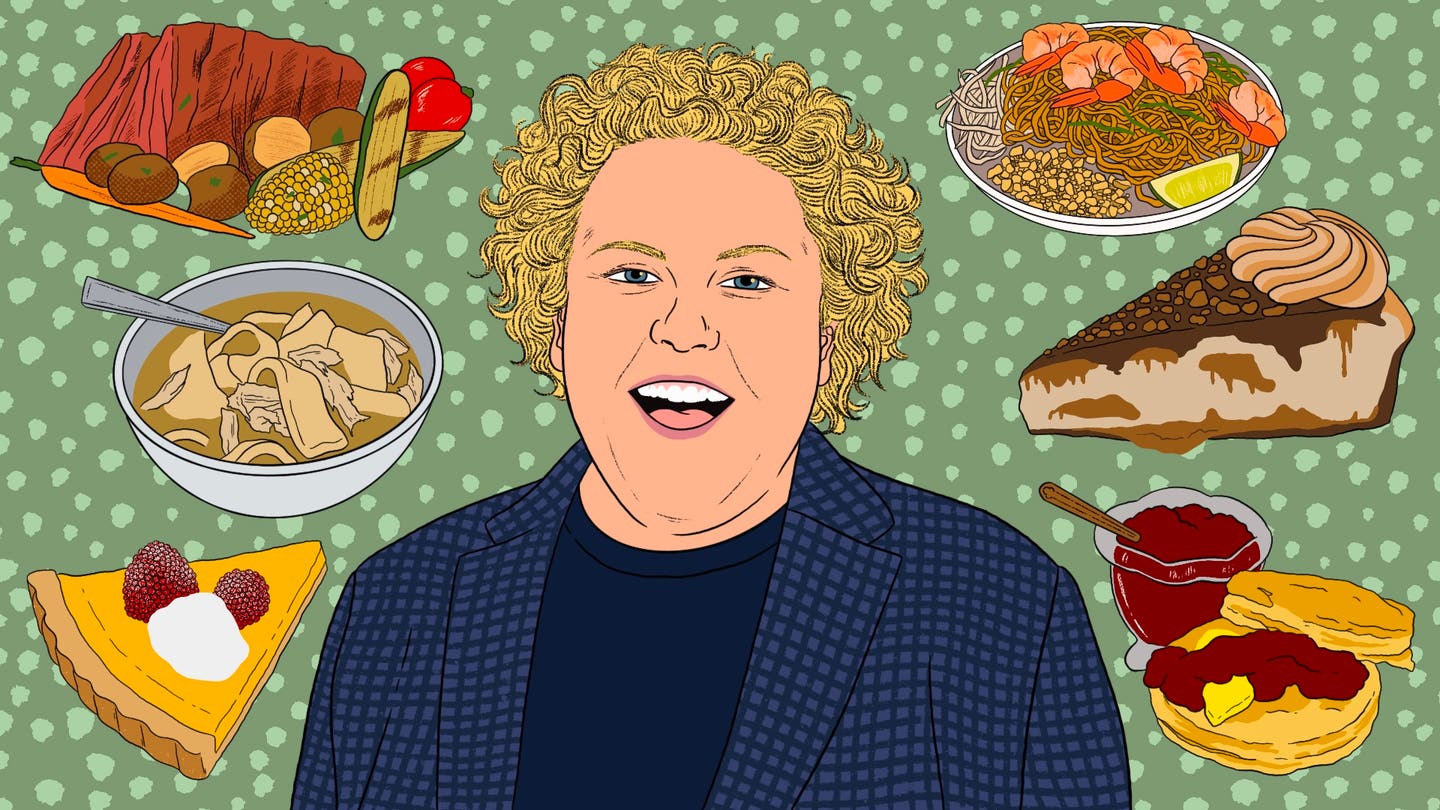
The Story Behind Orange Cauliflower
Walking through the Greenmarket near my Brooklyn apartment, I usually linger at one stand that I've dubbed the "alien farm." The stand seems to specialize in unusual vegetable varieties, from bulbous heirloom tomatoes and knobby beets the color of spilled ink to those pale Romanesco broccoli, which curl endlessly out from themselves like a vegetable Spirograph. I love these farmers' commitment to biodiversity and their obvious sense of whimsy, but sometimes I imagine that they secretly source their produce from some far-off planet where weird-looking vegetables are the norm.
The most striking "alien veg" of the bunch is the orange or "cheddar" cauliflower. In shape alone, it resembles any old cauliflower, but its color—ranging from creamy coral to sunburst orange—is strikingly unique. The hue, it turns out, comes from the extra beta-carotene naturally stored in its florets (which also gives this cauliflower 25 percent more vitamin A than the more common white variety).
Discovered in Canada in 1970, the mutant vegetable was shipped to Cornell University, where agricultural scientists crossbred it with white varieties to create the showstopper of a vegetable that's now available at farmers' markets and some grocery stores. Like other vegetables in the Brassica family (including Brussels sprouts, broccoli, and cabbage), orange cauliflower comes into peak season during the fall months, when the cool air lends it a deep sweetness. It tastes slightly more sugary and creamier than its cousin, but it can be successfully used in any recipe that calls for cauliflower: it's great when mashed, sauteed with potatoes, used as the base for soups, or roasted and served with pearl onions. Until it becomes too common to retain its "alien" status, orange cauliflower will remain an easy way to surprise and delight your dinner guests.
Buying Tips
Season: My Pride of New York harvest chart says that cauliflower can be found in my home state from mid-August through late November. In warmer parts of the country, like California, it can grow year-round.
Where to find it: Your best bet is to scan your local farmers' market, but you can also find orange cauliflower in some supermarkets and natural food stores like Whole Foods.
Price: Approximately $3-$5/pound.
Leah Koenig is a freelance writer, home cook, and food columnist for the Forward.
Keep Reading
Continue to Next Story










